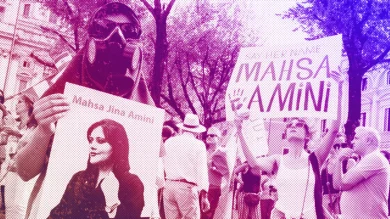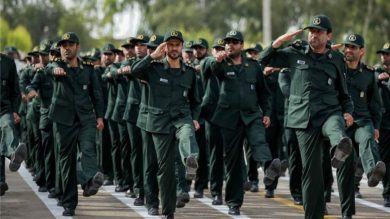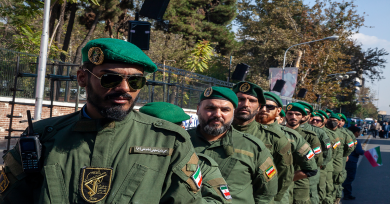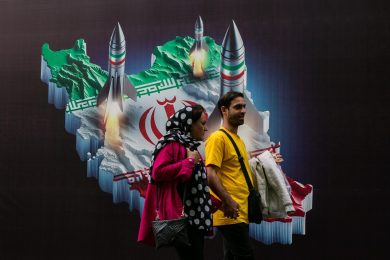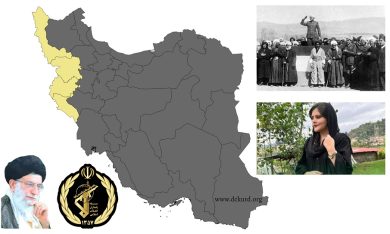The struggle for women’s rights in Iran has become one of the most powerful movements against the Islamic Revolutionary Guard Corps (IRGC) and the oppressive policies of the Islamic Republic. Women have long been at the forefront of resistance against the regime, but the death of Mahsa Amini in September 2022 ignited a historic uprising that shook the country. This movement, known as “Women, Life, Freedom,” has seen women defy oppressive laws, remove their hijabs in public, and lead protests in the face of brutal crackdowns by the IRGC.
Despite arrests, torture, and executions, Iran’s women continue to stand against the IRGC, demanding freedom, justice, and human rights. This report explores the role of women in leading the fight against the IRGC, the regime’s response, and the global impact of their resistance.
1. The Role of Women in Iran’s Resistance Movement
Women have been at the heart of Iran’s pro-democracy movements for decades. From student protests to labor strikes and political activism, they have consistently challenged the regime’s restrictive laws and human rights abuses.
A. Key Moments in Women-Led Resistance
1. 1979 Islamic Revolution
• Women participated in protests against the monarchy, but after the revolution, they lost many of their rights under the new Islamic government.
• Mandatory hijab laws were introduced, sparking the first women’s protests against the regime.
2. 1999 Student Protests
• Women played a significant role in student-led demonstrations for greater freedoms and democracy.
• The IRGC violently cracked down on activists, detaining and torturing many.
3. 2009 Green Movement
• Women, including lawyers, journalists, and students, protested against electoral fraud and political repression.
• Many female activists, including Nasrin Sotoudeh, were arrested and sentenced to prison.
4. 2017-2019 Protests Against Compulsory Hijab
• Women like Vida Movahed (the “Girl of Enghelab Street”) publicly removed their hijabs, sparking a viral movement against Iran’s morality laws.
• The IRGC arrested and harshly punished these women to deter others from following.
5. 2022-2023 Mahsa Amini Protests (“Women, Life, Freedom” Movement)
• The death of 22-year-old Mahsa Amini after her arrest by Iran’s morality police triggered nationwide protests.
• Women led demonstrations in schools, universities, and the streets, removing their hijabs and cutting their hair in defiance.
• The IRGC responded with extreme violence, including mass arrests, torture, and executions.
2. The IRGC’s Brutal Crackdown on Women Protesters
The IRGC and its affiliated security forces, including the Basij militia, have led violent crackdowns on women-led protests. The regime has used killings, sexual violence, torture, and imprisonment to silence women’s resistance.
A. Methods of Repression
1. Mass Arrests and Prison Sentences
• Women activists, journalists, and students are frequently arrested for participating in protests.
• Many are sentenced to long prison terms or placed in solitary confinement.
• Example: Prominent women’s rights activist Narges Mohammadi has been jailed multiple times for speaking out against the regime.
2. Sexual Violence as a Weapon
• Human rights organizations have documented cases of sexual assault and rape against detained female protesters.
• This tactic is used to intimidate and silence women in detention.
3. Surveillance and Digital Tracking
• The IRGC monitors social media to identify women who defy hijab laws or support protests.
• Women who post anti-regime content face arrest or harassment.
4. Public Executions and Forced Confessions
• The IRGC uses public executions and forced confessions to spread fear among women activists.
• Women are forced to “confess” on state TV under duress and torture.
3. The Economic and Social Impact of IRGC Repression on Women
Beyond physical violence, the IRGC’s economic policies and social restrictions have severely impacted Iranian women, pushing many into poverty, unemployment, and social isolation.
A. Economic Discrimination
• Women face restrictions in the job market, with the IRGC dominating Iran’s economy.
• Gender pay gaps, workplace harassment, and legal discrimination prevent women from achieving financial independence.
B. Restrictions on Education
• Female students who participate in protests are expelled or banned from university.
• Example: Dozens of female students were suspended after participating in the 2022 protests.
C. Forced Hijab and Dress Codes
• Women who refuse to wear the mandatory hijab face fines, travel bans, and job loss.
• The IRGC has deployed AI cameras in public places to track and punish women who do not comply.
4. Global Response to Iran’s Women-Led Resistance
The Iranian women’s movement has gained international attention, sparking protests, sanctions, and diplomatic pressure on the Iranian regime.
A. International Sanctions
• The U.S., EU, and UK have sanctioned IRGC officials involved in human rights abuses against women.
• Canada has designated the IRGC as a terrorist organization, while Europe debates doing the same.
B. Worldwide Protests and Solidarity
• Iranian diaspora communities have held protests in major cities worldwide, including Washington, London, Berlin, and Paris.
• Feminist activists, politicians, and celebrities have voiced support for Iranian women’s rights.
C. UN Actions and Human Rights Investigations
• The United Nations Human Rights Council (UNHRC) has launched an investigation into the IRGC’s crimes against women protesters.
• International human rights organizations continue to document cases of sexual violence, torture, and executions.
5. How Women Are Fighting Back Against the IRGC
Despite brutal crackdowns, Iranian women continue to defy the IRGC in innovative and courageous ways.
A. Defying Mandatory Hijab Laws
• Women are refusing to wear hijabs in public, even under surveillance.
• The “Girls of Revolution Street” movement continues despite arrests.
B. Organizing Underground Activism
• Women are forming secret networks to educate, fund, and protect one another.
• Encrypted messaging apps and VPNs help coordinate protests and evade surveillance.
C. Spreading Awareness Online
• Women inside Iran use social media to document IRGC abuses, despite the risk of arrest.
• Viral hashtags like #MahsaAmini and #WomanLifeFreedom have brought global attention to their struggle.
6. The Path Forward: What Can Be Done?
The fight for women’s rights in Iran is far from over. The international community must continue to support and amplify the voices of Iranian women.
A. Designate the IRGC as a Terrorist Organization
• The EU, UK, and other governments must follow Canada and the U.S. in fully designating the IRGC as a terrorist group.
B. Increase Targeted Sanctions
• More IRGC commanders and officials responsible for violence against women must be sanctioned.
C. Support Digital Freedom and Internet Access
• Funding VPNs and encrypted platforms can help activists bypass censorship and stay connected.
D. Support Asylum and Safe Refuge
• Governments should offer asylum to women activists who flee IRGC persecution.
Conclusion
Iran’s women are leading one of the most courageous fights for freedom in the modern era, standing against the IRGC’s repression despite violence, imprisonment, and execution. Their resistance continues to inspire movements worldwide, proving that authoritarian rule cannot silence the demand for justice.
Join Our Newsletter!
Stay informed with the latest updates, news, and ways to take action in the fight for justice and global security. Sign up now to get updates delivered straight to your inbox!

